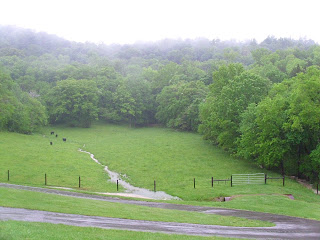 As we settled into our slower-paced life here in Middle Tennessee, we couldn’t help but marvel at the beauty abounding all around us. We came across so much LIFE while taking walks or playing in the creek. But as we discovered the vast assortment of plants and animals here – and the boys asked me more and more questions that I could not answer – I realized how much I DID NOT know about what was in our own backyard. Since I had no background in studying nature and had no idea where to start, I just decided to investigate life as we found it. We embarked on our outdoor play time with a camera in my pocket and the expectation that we would find something, even if we had to flip over a rock to look at insects… And thus began a passion for deliberately discovering the world around us – a learning adventure not just for the kids, but for me as well!
As we settled into our slower-paced life here in Middle Tennessee, we couldn’t help but marvel at the beauty abounding all around us. We came across so much LIFE while taking walks or playing in the creek. But as we discovered the vast assortment of plants and animals here – and the boys asked me more and more questions that I could not answer – I realized how much I DID NOT know about what was in our own backyard. Since I had no background in studying nature and had no idea where to start, I just decided to investigate life as we found it. We embarked on our outdoor play time with a camera in my pocket and the expectation that we would find something, even if we had to flip over a rock to look at insects… And thus began a passion for deliberately discovering the world around us – a learning adventure not just for the kids, but for me as well!
Why study nature?
Up until a few months ago, I had lived my whole life just fine without studying nature. I didn’t know specific names of anything, much less the interesting facts or other details about them. It just so happened I was blessed with a friend that could name birds and plants and insects – it was so amazing to be around her, and I thought – I want that!
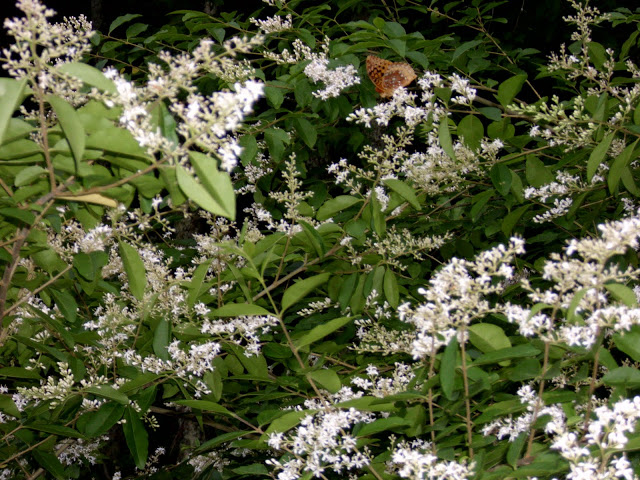 |
| A butterfly on a tree with little white flowers. |
Now that I’ve attempted it myself, I’ve discovered that it’s a bit addicting to learn about the world around me. There is so much in a name – so much in knowing more about the things we see every day. Where at one time I would walk down our road saying, “I love the fragrance of those trees with the little white flowers,” I now say, “I love the fragrance of our Chinese Privets.” I have gained a greater appreciation for life – a greater appreciation for God’s creation – simply by learning the names of trees and insects and butterflies and birds. And the thing is: it is all pretty intimidating if you ever try to think about everything you don’t know. I like to take it in little pieces – chasing certain things around with the camera, observing little critters with the kids, and looking up information about them until we know just a little bit more.
So what does nature study look like for beginners?
Let me start out by admitting that I had Anna Comstock’s Handbook of Nature Study saved to my computer for over a year before I started using it. At almost 1,000 pages (a 192MB file), it intimidated me just way too much. How would I ever find the time to use something like this? How would I ever figure out a plan to incorporate it into our lives? But one day after a good rain, I decided to do a search within this pdf document when we came across snails in our backyard. And that’s how we’ve incorporated this book into our lives.
About the time we started doing nature studies in our family, I also came across two blogs that have greatly encouraged me to get outside and learn: Nature Connections hosted by Living and Learning and The Outdoor Hour Challenge hosted by The Handbook of Nature Study blog (tons of great free resources to help you get started).
An Example of Nature Study: Chasin’ Butterflies
Last spring, we were in awe of the number of butterflies that collected everywhere around us. It was almost as if we were in a zoo butterfly habitat. One species in particular greeted us every time we were outside.
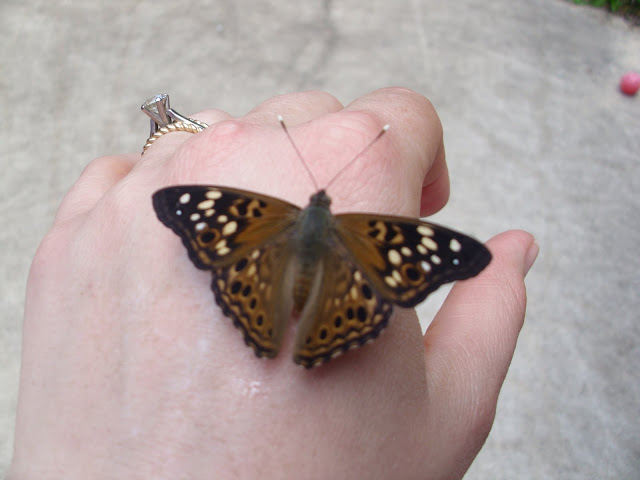 |
| Imagine hundreds of these butterflies flying around you… |
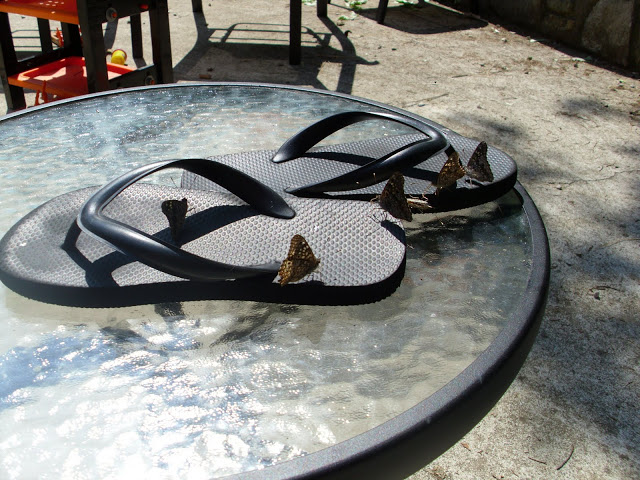 |
| or gathering on your flip-flops… or having to drive carefully down the road so you don’t run them over… |
After an on-line search for Tennessee butterflies, we discovered that these are Hackberry Emperors, which meant we had Hackberry trees somewhere around our home. And though we already had the Audubon Field Guides for birds and trees, we decided to purchase a couple of field guides on insects and butterflies to help us in identification. Our favorite field guides have been the Kaufman Field Guides due to the ease of use:
Using the field guides, we confirmed that the butterflies were Hackberry Emperors and we do, in fact, have Hackberry trees all over our property. Not only that, we have discovered many other butterflies, such as the Tawny Emperor, the Zebra Swallowtail, the Easter Tiger Swallowtail, the Red-spotted Purple, the Great Spangled Fritillary and the Clouded or Orange Sulphur. What’s more – we can contribute our sightings to on-line databases to help in the research of butterflies in North America. Now isn’t that cool?
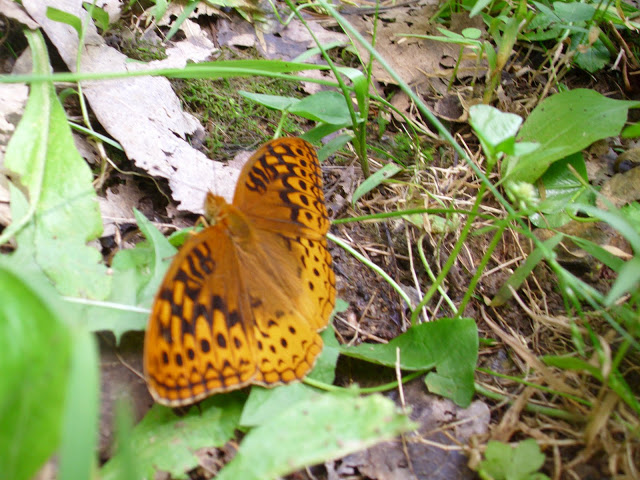 |
| Great Spangled Fritillary |
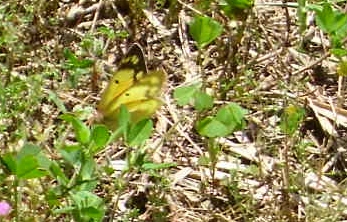 |
||||
| Clouded or Orange Sulphur. They hybridize, so oftentimes it’s difficult to distinguish between the two species. And it’s really hard to get a picture of them! |
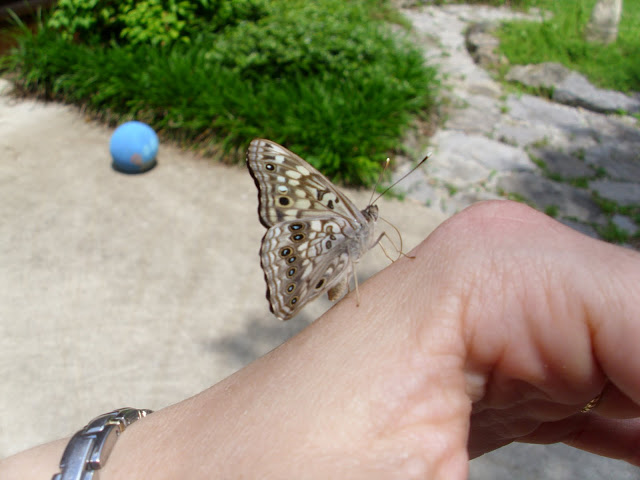 |
| Hackberry Emperor with proboscis extended. |
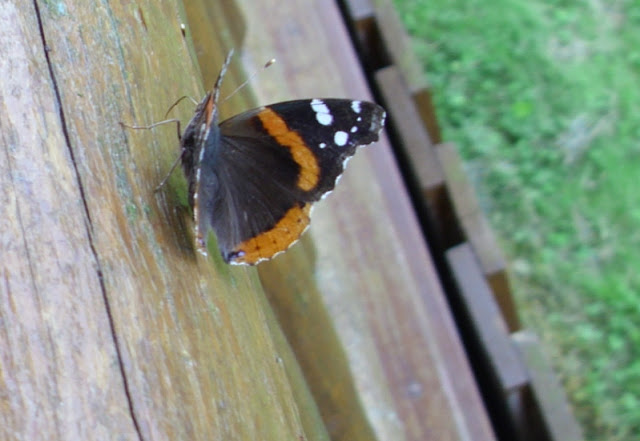 |
| Red Admiral |
Websites that we use to cross-reference the field guides (mainly due to my inexperience) are as follows:
- Butterflies and Moths of North America (BAMONA): This site also encourages its users to share their sightings to improve what we know about butterflies and moths. For an example, click here for the Great Spangled Fritillary.
In fact, you do not need to purchase a field guide for butterflies because the extensive BAMONA database and the Butterfly Site will surely help you to properly identify butterflies or moths that you may encounter.
Beyond simple classification, Anna Comstock’s Handbook of Nature Study contains many lessons on butterflies and moths (page 301-334). Not only does this book provide specific questions to guide us in learning about butterflies and moths, but it also contains project ideas, poems, and facts in a story-like format for each creature or plant. She includes a diagram of the caterpillar showing where the head, thorax and abdomen are (which is not always easy to figure out if you are new to it) along with other details about their life cycle. By reading this book, we learned the the woolly worm (or woolly bear) that we’ll start to see a little later is the larval form of the Isabella Tiger Moth or the Harnessed Tiger Moth, both of which we’ve seen in adult stages around our home.
Though the Handbook of Nature Study is a thorough and comprehensive resource to use as you pursue the art of nature study (and is my favorite resource out there when it comes to nature study), there are hundreds of other nature study books out there as well. You can find many of them as free pdfs (or other electronic versions) on archive.org or on Google free ebooks. Some other great resources we’ve used to discover more about insects are:
- Margaret Williamson’s First Book of Bugs (my children have really enjoyed this one!)
- W.J. Holland’s Butterfly Book
- Albert Tibbets’s First Book of Bees
And more about nature study:
- Lessons in Nature Study by Jenkins and Kellogg
- Nature Study Made Easy by Shallow and Cullen
Now, after making observations or conducting a little research, we journal our observations and learnings. As I post our discoveries here on our blog, the children can write and/or draw what they learned or observed in their journals (aka, a spiral notebook). Or you can create a lapbook on butterflies to capture the things you’ve learned, or even try your hand at an origami butterfly.
If you are still thinking, “Can I do a nature study? How do I do a nature study? Where do I start?” just check out the nature studies we’ve completed to show you that, yes, even a rather scatterbrained novice can do this! If I can do it, anybody can do it. And it really is worth it!
 |
| A Great Spangled Fritillary on a Chinese Privet |
To read our nature study posts and download free nature study resources, click here.

